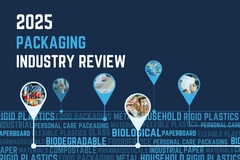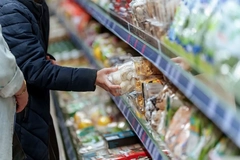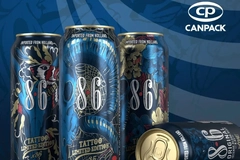ProAmpac highlights sustainability progress as fiberization gathers pace

ProAmpac has released its 2025 Impact Report, dedicated to its tenth company anniversary. The report examines its achievements, emphasizing its commitment to environmentally sustainable packaging and recyclability, including its shift from plastic to fiber.
UK packaging expert Neil Farmer underscores the complexity of the company’s rapid sustainability policy transformation, especially amid material diversification and new acquisitions.
“It’s always difficult to be specific about claims made by businesses about sustainable attributes, particularly with a company like ProAmpac that has expanded so rapidly in recent years,” Farmer tells Packaging Insights.
In response, a ProAmpac spokesperson says that the company considers a product to have a “sustainable attribute” if it qualifies under one or more of its “internally defined” product platforms:
• ProActive Recyclable (for film and fiber)
• ProActive Compostable
• ProActive PCR and Certified Circular Solutions
• ProActive Renewable
• ProActive Recycle-Ready.
ProAmpac launched a materiality assessment to identify the key focus areas most critical to the business and its stakeholders in 2022. “Since then, we have formalized these priorities into our core focus areas, aligning them with select UN Sustainable Development Goals.”
“These priorities now shape the foundation of our strategy and are reflected in this report. While formal targets are being developed in parallel with our Science Based Targets initiative commitments, we are already seeing strong results from our early initiatives.”
The company says its waste-to-landfill reduction program achieved a 16% decrease in 2024 compared to the prior year — “an early indicator of our progress and commitment to continuous improvement.”
Fiber-based transformation
ProAmpac points to the scaling of fiber use as a “key highlight” from the report, especially as it refers to an “alternative to its non-recyclable packaging to accelerate circularity.”
 ProAmpac's ProActive Recyclable FibreSculpt high-barrierbsolution engineered for thermoforming applications (Image credit: ProAmpac).“The Fiberization of Packaging initiative enables the transformation of traditionally non-recyclable materials into fiber-based formats that are compatible with curbside recycling,” says the company spokesperson.
ProAmpac's ProActive Recyclable FibreSculpt high-barrierbsolution engineered for thermoforming applications (Image credit: ProAmpac).“The Fiberization of Packaging initiative enables the transformation of traditionally non-recyclable materials into fiber-based formats that are compatible with curbside recycling,” says the company spokesperson.
Despite the emphasis on fiberization, Farmer says that ProAmpac continues to offer “a wide range of plastic products, such as plastic pouches,” in its portfolio.
“ProAmpac has had to make rapid advances in innovations in fiber-based alternatives for non-recyclable items, which some plastic pouches certainly are,” he adds.
“There are undoubtedly advances in recyclability of pouches, but there is still some way to go in this area of the packaging market.”
Scalability is vital
ProAmpac says that its LCAs show that fiber-based formats often achieve “significant reductions” in GHG emissions, fossil fuel use, and water consumption compared to rigid or foil-based packaging alternatives.”
Other benefits of fiberization, according to the company spokesperson, include:
• Enhanced recyclability: The packaging is designed for wide acceptance in existing paper recycling infrastructure, reducing landfill dependency
• Products use renewable resources, with materials sourced from FSC, PEFC, and SFI-certified forests.
However, Farmer reminds us that “scalability is important.”
“My experience is that fiber-based alternatives will greatly advance circularity in packaging, particularly in the case of replacing plastics with fiber-based packaging,” he acknowledges.
 ProAmpac’s ProActive Recyclable R-2300 series is a recyclable film for food, pet care, and home care (Image credit: ProAmpac).
ProAmpac’s ProActive Recyclable R-2300 series is a recyclable film for food, pet care, and home care (Image credit: ProAmpac).
“It is right for ProAmpac to identify the need for greater recycling, which for many plastic substrates is in danger of flat-lining, with little growth at all. Fiber is really one of the most viable alternatives to achieve greater circularity, and the company is doing much work in this area.”
Verifying sustainability
The ProAmpac spokesperson explains that the verification of its products’ “sustainable attributes” is performed via a combination of internal product testing, third-party certifications, and industry program alignment.
“ProAmpac takes a data-informed, science-based approach to evaluating trade-offs through ProActive CHART LCAs. These LCAs measure a wide range of environmental metrics — including GHG emissions, fossil fuel usage, water consumption, and land use — for each packaging innovation.”
The spokesperson adds that customers also have access to LCAs to enable well-informed, data-backed decisions when selecting packaging solutions that align with their sustainability goals.
“ProAmpac has a large Collaboration and Innovation Centre in the US at Ogden, near Rochester, New York, and this is a well-respected operation,” says Farmer.
Recently, ProAmpac partnered with Western Michigan University, US, to advance fiber packaging circularity.
Farmer adds that ProAmpac has made “many acquisitions in 2024,” stating that “the company is including many newly acquired businesses in the report for the first time.”
“How to offer a sustainable attribute for the group’s entire product portfolio is therefore difficult to quantify.”











